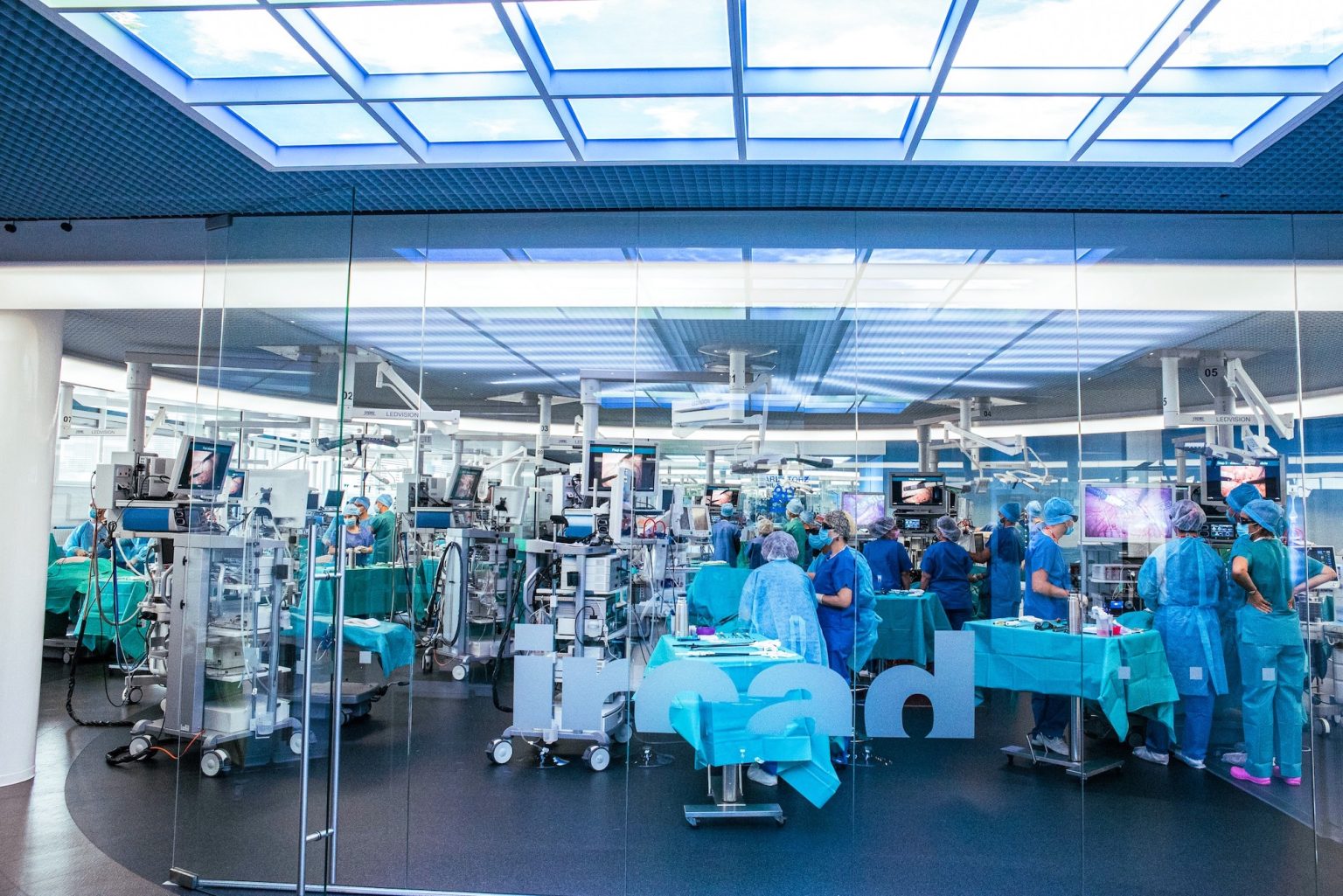
[video_ircad file=”Lindbergh” folder=”lindbergh” lang=”en” ext=”flv”]Surgeons Achieve World First with Successful Telesurgery from New York on Patient in France.
Operation Lindbergh, a complete telesurgical operation carried out by a team of French surgeons located in New York on a patient in Strasbourg, France, was a total success. This is the first time in medical history that a technical solution has proved capable of reducing the time delay inherent to long distance transmissions, thus making this type of procedure possible…
In 1927, Charles Lindbergh flew non-stop across the Atlantic for the first time in history, aboard the Spirit of St. Louis. This pioneering feat took place from Paris to New York. It was in the same spirit of innovation and daring that the IRCAD/EITS (Institut de Recherche contre les Cancers de l’Appareil Digestif/European Institute of TeleSurgery) team realized the first transatlantic surgical procedure between New York and Strasbourg, appropriately dubbed the Lindbergh operation.
Since 1993, the experts at IRCAD/EITS had been preparing for the impossible. The notion of long-distance surgery took shape within the EUREKA Master (minimal access surgery by telecommunication and robotics) project. It was felt that enhancing the quality, reliability and safety of the data transmission by digitizing and robotizing the surgical act could eliminate all space and time constraints. Robotization of the surgical act was first developed with the support of the Karlsruhe Research Center. This led to an effective, yet heavy, non-ergonomic system that was not suited for introduction in the operating room.
Wiser for the experience, the IRCAD/EITS team geared itself towards partnership with an industrial company. This involved working with ZEUS™, a robot comprised of three arms. Two arms manipulate the instruments in response to the movement of the surgeon’s hands. The third arm manipulates the voice-controlled endoscope. A console enables the surgeon to handle the joysticks that command the two instruments held by the robotic arms. Each articulated arm has a double security system. Signals are checked more than a thousand times per second. Manual information originating from the surgeon is analyzed by the master-slave interface and rendered safe. Demultiplication also enables the tele-effector to carry out extremely precise movements. […]

Please note that the IRCAD administrative board and staff are closely monitoring the evolving COVID-19 situation, in full compliance with all applicable laws and regulations in France. The health, safety, and well-being of our participants, experts and staff are our top priority!
Despite the current context, the IRCAD stands firmly by your side to help you acquire knowledge and skills. Come and join us !
We would like to draw your attention that the « Vaccine Pass » is now mandatory in France since end of January 2022 and replaces the former « Health Pass » to access places that are open to the public, such as cinemas, museums, cafés and restaurants, hotels as well as the IRCAD Institute which welcomes participants in the framework of its courses and seminars. Thus, a PCR test without vaccination is no longer sufficient to take part in our courses.
The vaccine pass includes a proof of the following (one of the 3 items is sufficient):
Further information about the new vaccine pass can be found at :
We very much hope to be able to count on your kind understanding of those rules which have been set by the French Government and which our Institute is required to apply